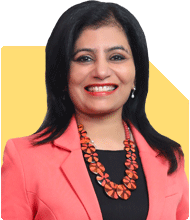Do my investments in Aditya Birla Sunlife Hybrid 95 Fund and Parag Parikh Flexi Cap Fund fit my profile?
Milind Vadjikar |655 Answers |Ask -Follow
Insurance, Stocks, MF, PF Expert - Answered on Nov 18, 2024
He has a mechanical engineering degree from Government Engineering College, Sambhajinagar, and an MBA in international business from the Symbiosis Institute of Business Management, Pune.
With over 16 years of experience in stock investments, and over six year experience in investment guidance and support, he believes that balanced asset allocation and goal-focused disciplined investing is the key to achieving investor goals.... more

Hi Milindji, i am 45 yrs. I have taken SIP with lumsum amount rs. 50000 of aditya birla sunlife hybrid 95 fund -growth & rs.100000 lumsum for parag parikh flexi cap fund-growth. Please review & suggest any other if any
If you have invested in these funds with long-term horizon then they seem to be inline with your goal and risk appetite.
Continue investing with annual review of performance.
Best wishes;
You may like to see similar questions and answers below
Omkeshwar Singh | Answer |Ask -Follow
Head, Rank MF - Answered on Jun 09, 2021
Ulhas Joshi |279 Answers |Ask -Follow
Mutual Fund Expert - Answered on Jun 21, 2023
Ulhas Joshi |279 Answers |Ask -Follow
Mutual Fund Expert - Answered on Nov 21, 2023
Ramalingam Kalirajan |7042 Answers |Ask -Follow
Mutual Funds, Financial Planning Expert - Answered on May 01, 2024
Milind Vadjikar |655 Answers |Ask -Follow
Insurance, Stocks, MF, PF Expert - Answered on Oct 28, 2024
Milind Vadjikar |655 Answers |Ask -Follow
Insurance, Stocks, MF, PF Expert - Answered on Nov 18, 2024
Ramalingam Kalirajan |7042 Answers |Ask -Follow
Mutual Funds, Financial Planning Expert - Answered on Nov 18, 2024
Archana Deshpande |66 Answers |Ask -Follow
Image Coach, Soft Skills Trainer - Answered on Nov 18, 2024
Milind Vadjikar |655 Answers |Ask -Follow
Insurance, Stocks, MF, PF Expert - Answered on Nov 18, 2024
Ramalingam Kalirajan |7042 Answers |Ask -Follow
Mutual Funds, Financial Planning Expert - Answered on Nov 18, 2024
Anu Krishna |1303 Answers |Ask -Follow
Relationships Expert, Mind Coach - Answered on Nov 18, 2024
Anu Krishna |1303 Answers |Ask -Follow
Relationships Expert, Mind Coach - Answered on Nov 18, 2024
Anu Krishna |1303 Answers |Ask -Follow
Relationships Expert, Mind Coach - Answered on Nov 18, 2024
Anu Krishna |1303 Answers |Ask -Follow
Relationships Expert, Mind Coach - Answered on Nov 18, 2024
























